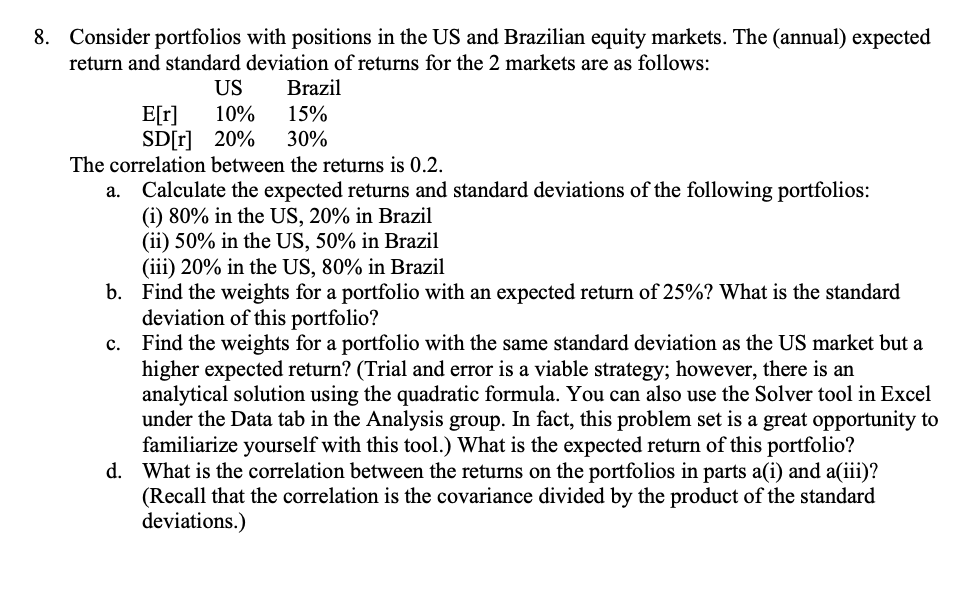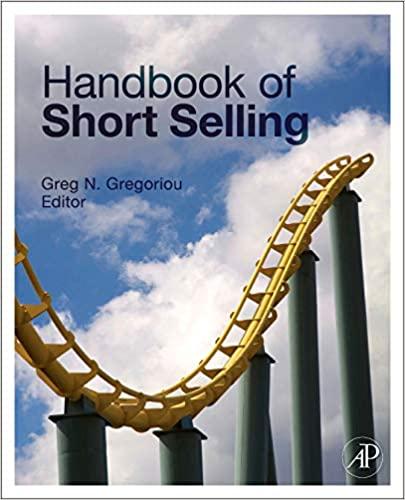
8. Consider portfolios with positions in the US and Brazilian equity markets. The (annual) expected return and standard deviation of returns for the 2 markets are as follows: US Brazil E[r] 10% 15% SD[r] 20% 30% The correlation between the returns is 0.2. a. Calculate the expected returns and standard deviations of the following portfolios: (i) 80% in the US, 20% in Brazil (ii) 50% in the US, 50% in Brazil (iii) 20% in the US, 80% in Brazil b. Find the weights for a portfolio with an expected return of 25%? What is the standard deviation of this portfolio? c. Find the weights for a portfolio with the same standard deviation as the US market but a higher expected return? (Trial and error is a viable strategy; however, there is an analytical solution using the quadratic formula. You can also use the Solver tool in Excel under the Data tab in the Analysis group. In fact, this problem set is a great opportunity to familiarize yourself with this tool.) What is the expected return of this portfolio? d. What is the correlation between the returns on the portfolios in parts a(i) and a(iii)? (Recall that the correlation is the covariance divided by the product of the standard deviations.) 8. Consider portfolios with positions in the US and Brazilian equity markets. The (annual) expected return and standard deviation of returns for the 2 markets are as follows: US Brazil E[r] 10% 15% SD[r] 20% 30% The correlation between the returns is 0.2. a. Calculate the expected returns and standard deviations of the following portfolios: (i) 80% in the US, 20% in Brazil (ii) 50% in the US, 50% in Brazil (iii) 20% in the US, 80% in Brazil b. Find the weights for a portfolio with an expected return of 25%? What is the standard deviation of this portfolio? c. Find the weights for a portfolio with the same standard deviation as the US market but a higher expected return? (Trial and error is a viable strategy; however, there is an analytical solution using the quadratic formula. You can also use the Solver tool in Excel under the Data tab in the Analysis group. In fact, this problem set is a great opportunity to familiarize yourself with this tool.) What is the expected return of this portfolio? d. What is the correlation between the returns on the portfolios in parts a(i) and a(iii)? (Recall that the correlation is the covariance divided by the product of the standard deviations.)







